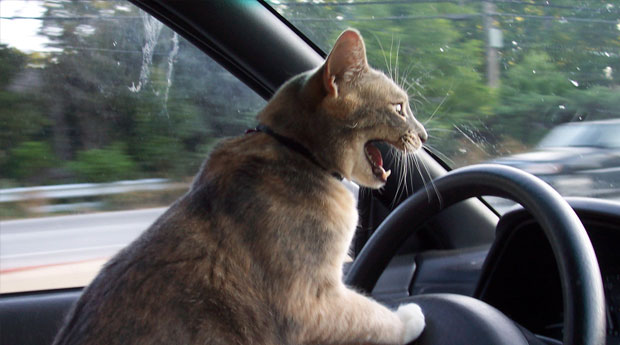How To Get The Best Work From An Agency
 (Photo via PDXdj)
(Photo via PDXdj)
While we always hope for the best, sometimes agency-client relationships become like angry drivers encountering each other on the road. We’ve all done it. We judge other drivers - verbally, under our breath, or even with unique hand gestures. From afar, it’s obvious what other drivers should be doing and it pisses us off when they cut us off or drive too slow. However, we become impatient jerks in the process. Maybe the other driver is late for an appointment. Maybe they just got fired. Maybe they have to go to the bathroom. Whatever it is, they are driving that way for a reason.
It is just as easy to judge an agency from afar, especially when the work and team feels as detached from you as another driver on the road. And from our perspective, we can be equally guilty of unfairly judging clients. Underneath our own occasional tantrums is a sincere desire to deliver great work. It’s an emotional reaction. The designer who works on your project may have worked on that design for weeks. It’s what they ate, thought, and stressed about for a long time. It was a fight. There was biting, kicking and eye-gouging. It got personal. The people who work on your projects are craftspeople. Their medium may be pixels, copy, or even code, but they take their work seriously.
I’m not saying clients have to like all of our work. In fact, clients who push back can be one of the best ways we learn and evolve as a company. However, clients can unfortunately sabotage what might be a perfectly good agency project by dropping the ball in very basic yet easily fixable ways. From one “driver” to another, here are three common sources of frustration between agencies and clients that prevent great work from happening (shared by members of the Nebo Agency team).
“Knowing budget helps us gauge whether a client’s expectations are realistic, but that information aids us in crafting the most effective solution.” – Paige Hawks, Business Development
Tell Us Your Budget (If You Have One)
Paige is committed to helping the customer in the best way possible, and that means ensuring a project is a fit before it even starts. Lack of a budget – even a rough budget – from the client suggests to us that the project has not been well thought out. That is always a red flag for risk. From our experience, lack of a defined budget may also mean lack of client project objectives, clear client requirements, and a good chance of future scope issues. By defining a budget ahead of time, clients will have a better chance of finding the right agency to fit their needs and be more prepared to work with them in planning out goals and requirements.
“Involve key stakeholders. Shielding decision makers until round two or three often sends the ship astray.” – Ben Robinson, User Experience
Get All Hands On Deck
It’s a tragic error to let “ivory tower” executives and other key people at the client organization only have a glimpse of a project at the very end. As a project manager, it’s a big red flag when I hear during a key deliverable meeting, “Oh, the CEO couldn’t make it. I’ll show him after we make these changes.” This never goes well. At best, the CEO may approve the work, but he gets the CliffsNotes version: all facts, but no nuance and underlying meaning. At worst, the CEO hates it, the middleman comes back with, “He doesn’t like it,” and the agency is left guessing what to do next. This inevitably turns into a game of “Please the CEO.” Avoid final unveilings and get input ASAP.
“Focus on giving feedback that is non-opinionated and provides an opportunity for the person that created the work to provide context... your input will be more informed and valuable.” – Adam Harrell, The Golden Rules of Giving Great Feedback.
This Isn’t About What You “Like”
The key phrase here is “valuable.” If your words are well thought out, they will connect better with those who hear them. If we understand what you mean, we can meet your needs in new and exciting ways.
An agency-client relationship is ultimately a partnership – or even a friendship. Not the kind of friendship where you pat each other on the back and smile all the time, but a friendship where the agency strives to make the client the best they can be. At the end of a project, everyone involved should feel like we just had a great workout – happy we did it and knowing we’re better off for having done it. To do that, mutual understanding is required and it helps if the client truly believes we are on their side. And if we’re drivers, maybe we’re now waving at each other with five fingers instead of one.

Comments
Add A Comment